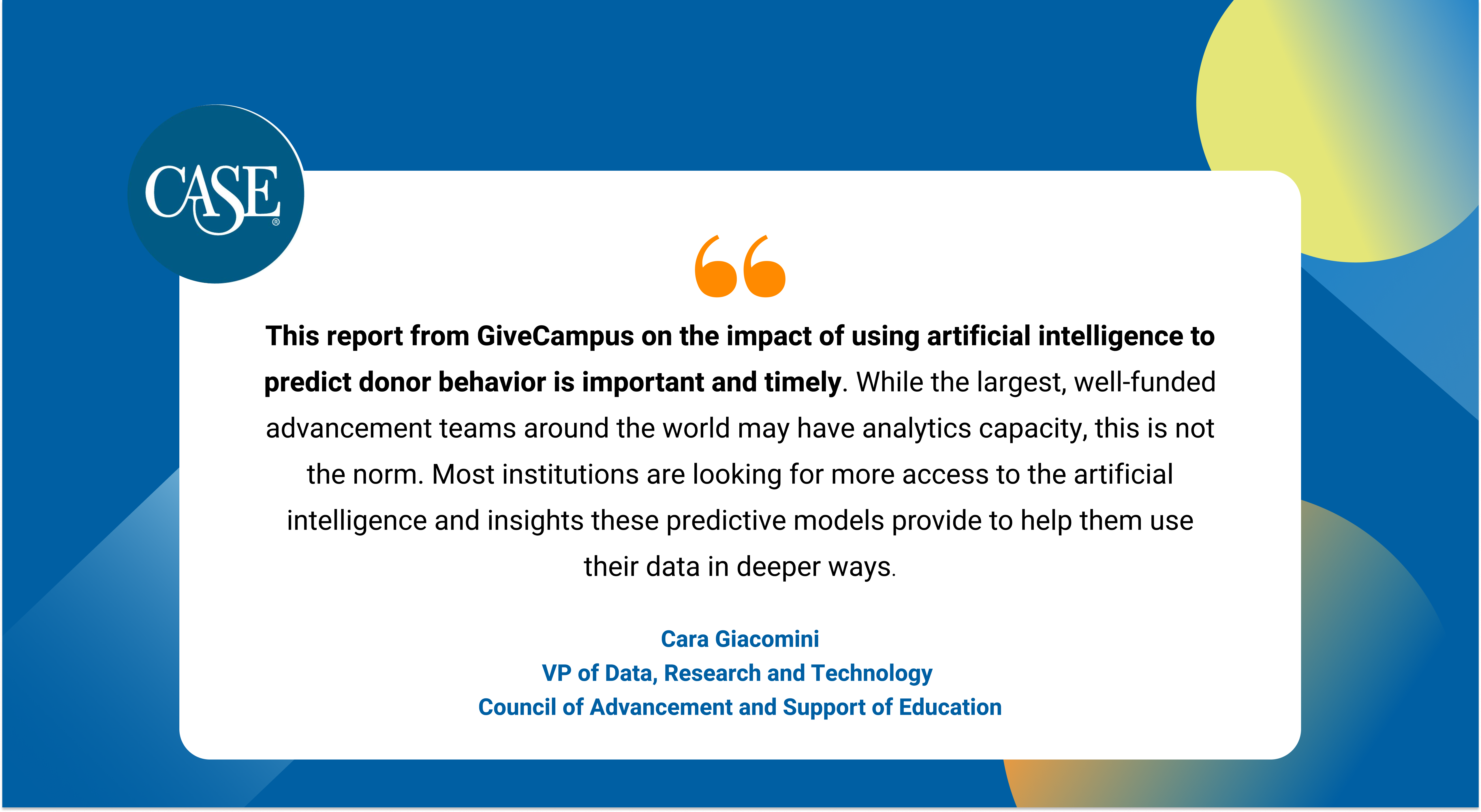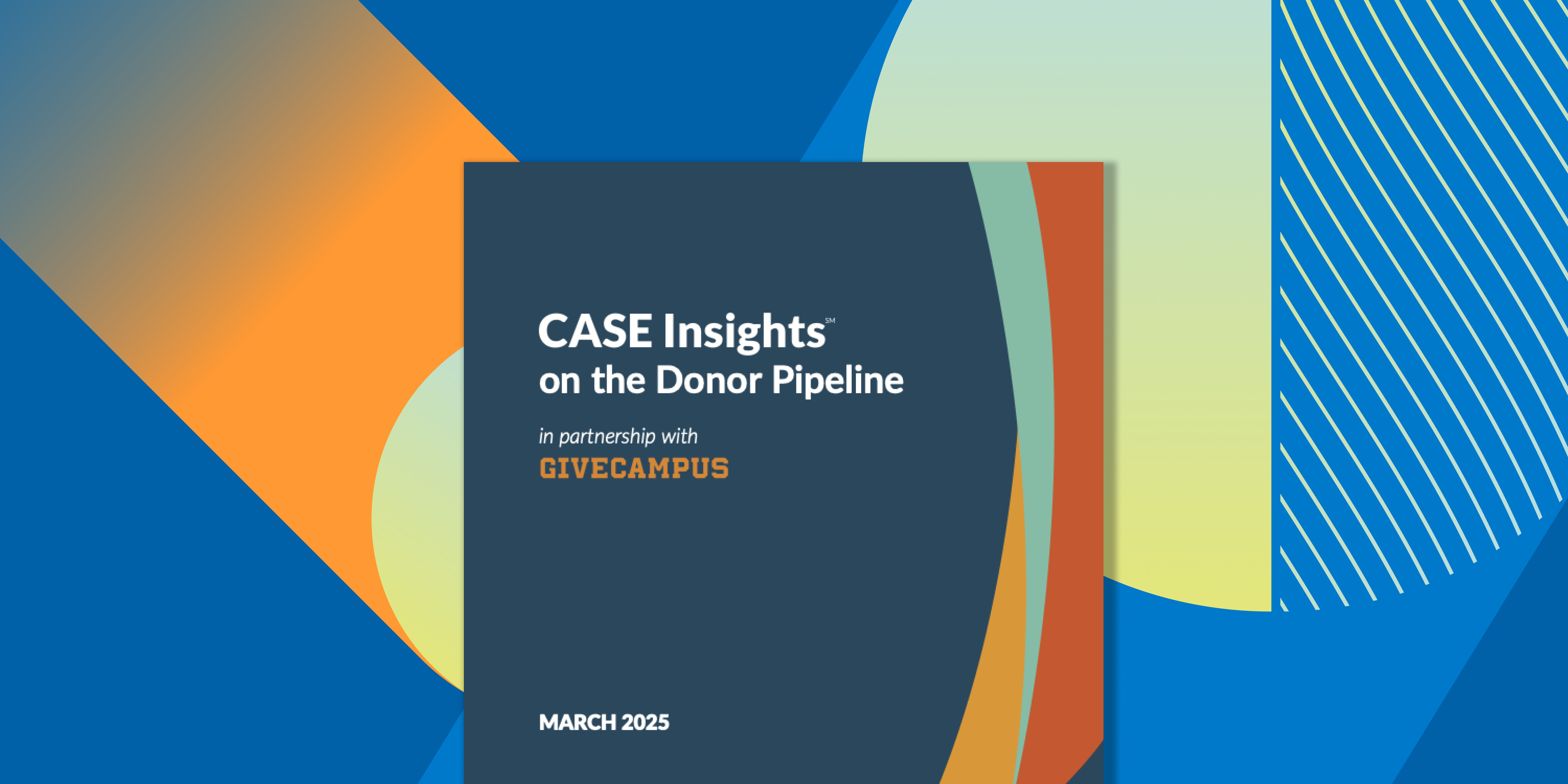How Data Scientists are Using AI to Predict Donor Behavior
Do you check the weather before you start your day? Maybe you eye the thermostat, lift the shade, or just poke your head out the door and look up. It’s a good start, but (depending on myriad factors including your zip code) deciding if you should layer up, bring an umbrella, or apply sunscreen may require a little more data.
You could factor in the previous day’s weather. Or make assumptions based on what you know to be historically true for the time of year in your region. Or you could just take your cue from what the school kids boarding the bus across the street are wearing.
At some point however, it’s highly likely that you’ll defer to a more authoritative source. In fact, most of us—4 out of 5, according to the polling site FiveThirtyEight—check a weather report daily. And nearly a quarter of us rely on the mini meteorologist that lives in our mobile device to hedge our weather bets.
Whether you use the default weather app on your smartphone or tune in to your local news station, you’re directly benefiting from data science and predictive modeling. And how meteorologists arrive at a forecast is not unlike how today’s data scientists working in the field of philanthropy predict donor behavior. At GiveCampus, we affectionately refer to these fundraising soothsayers as “philanthrologists” and we have a team of them crunching donor data for our partner schools 24/7.
Just like weather forecasting, predicting donor behavior involves complex systems with multiple variables and interdependencies. Instead of atmospheric behavior like temperature, pressure, humidity, and wind patterns, philanthrologists focus on constituent behavior like individual motivations, personal experiences, social influences, and external factors.
Using machine learning, data scientists at GiveCampus are training models to analyze vast amounts of anonymized donor data, identify patterns, and anticipate future behavior. In doing so, we hope to help schools better understand their constituents, more effectively tailor their fundraising efforts, and make more informed decisions to expand their institution’s impact.
Why targeted outreach matters
Fundraising appeals are a powerful tool for advancement professionals, but now more than ever the battle for attention in the inbox—and mailbox—is fiercely competitive. It’s increasingly difficult for your communications to stand out among the Amazons, Etsys, and Wayfairs of the world—to say nothing of the myriad subscription services and worthy nonprofits also angling for eyeballs.
Vying for your constituent’s attention is also costly, so to be effective your outreach needs to be targeted. “Spray-and-pray” (i.e., sending as many communications to as many people as possible) is not the answer, and there are real costs to making the wrong ask to the wrong donor.
Therefore, to maximize the value of your appeals, you need to find constituents who are likely to be receptive to them—and artificial intelligence (AI) can help. Our data scientists are busy harnessing the power of predictive modeling right now to forecast donor behavior and drive better outcomes. If you and your team aren’t already leveraging machine learning, chances are you will be soon—and you won’t need in-house data scientists to reap the benefits.
For fundraisers who may be just learning about predictive modeling, meteorology makes for an apt metaphor. Think of it this way: there are a number of data-based strategies you probably already employ that attempt to anticipate donor behavior (akin to looking out the window, seeing what others are doing, and recalling seasonal data to gauge the weather).
Maybe you segment outreach based on donor demographics (age, affiliation, region) or giving history. It’s a good start, but a little more data might help you form a clearer picture—and that’s where artificial intelligence, specifically machine learning—can lend a hand. Machines are capable of uncovering patterns in vast amounts of data at lightning speed and are far more adept at recognizing changes over time than we mere mortals are. And, when trained properly, machines are exponentially better at predicting donor behavior too.
You can think of machine learning as a supercharged and automated version of the type of segmentation you already perform. For example, the strategy to target LYBUNT alumni who gave $500+ last year is built on a simple “model” designed to predict who will be most receptive to your solicitation. Machine learning algorithms work in a similar way, but instead of analyzing a handful of criteria, predictive models analyze hundreds of variables and identify the precise combination likely to yield the best results.
Data scientists at GiveCampus recently trained machine learning models to effectively anticipate which constituents would be most likely to make a recurring gift, increase the size of their donation, or serve as an advocate. If you’re curious about our findings and what they may mean for you and the future of fundraising, we encourage you to download our newly published white paper, which features a foreword from our partners at CASE.

Now is the time for advancement leaders at institutions of all sizes to begin to educate themselves about the increasingly vital and inevitable role predictive modeling will play in their school’s future fundraising efforts. You may not have the in-house technical expertise to develop complex machine learning models from scratch, but there’s much you can learn from partnering with platform providers like GiveCampus who are pioneering the research (and already piloting solutions) in this space.
Finally, you don’t have to wait to apply data science to your fundraising initiatives—you can get started with AI-powered solutions today. Talk to a fundraising expert to find out how schools that partner with GiveCampus are leveraging data-led insights to enhance donor targeting, optimize campaigns, and nurture more meaningful relationships with their constituents.





